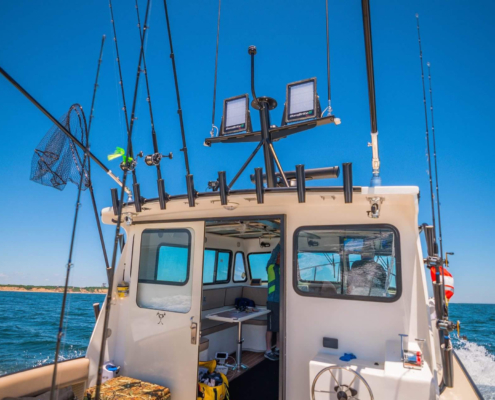 https://blog.durabritelights.com/wp-content/uploads/2025/04/How-Weatherproofing-Maximizes-the-Lifespan-of-Waterproof-Boat-Lights.jpg
1250
2000
Abstrakt Marketing
/wp-content/uploads/2024/01/DuraBrite-Logo_6a362a2d-4dff-4723-a7e4-1466056fae1e_220x.png
Abstrakt Marketing2025-04-21 13:30:212025-04-21 13:30:24How Weatherproofing Maximizes the Lifespan of Waterproof Boat Lights
https://blog.durabritelights.com/wp-content/uploads/2025/04/How-Weatherproofing-Maximizes-the-Lifespan-of-Waterproof-Boat-Lights.jpg
1250
2000
Abstrakt Marketing
/wp-content/uploads/2024/01/DuraBrite-Logo_6a362a2d-4dff-4723-a7e4-1466056fae1e_220x.png
Abstrakt Marketing2025-04-21 13:30:212025-04-21 13:30:24How Weatherproofing Maximizes the Lifespan of Waterproof Boat LightsA Guide to Boat Navigation Tools
Safely navigating waterways requires a keen awareness of your surroundings while ensuring you’re effectively conveying your vessel’s position to others. To achieve this, you need to understand these essential boat navigation tools and the lights onboard your boat.
Stay Safe on the Water: Essential Boat Lights
Boat lights serve two critical purposes—to see and to be seen. Many boaters recognize the importance of being seen by complying with requirements for navigation lights. But it’s easy to overlook the possibility that ambient light won’t always be enough to see what’s around your boat in low-visibility conditions. How prepared are you to navigate on a moonless night or in stormy weather? If your answer involves relying on a radar screen alone, you need to take a second look at your lighting setup.
Whenever you’re on the water, you should be prepared for the possibility of poor visibility—even when you only plan on boating during the day. From sudden cloaks of fog in the Gulf to a surprise storm on the lake when the forecast called for clear skies, you never know when you may need your boat’s lights, but when you do, nothing else comes close in terms of safe navigation. That’s why we’re starting this guide by highlighting them. Without the right boat lights, even the latest boat navigation tools may all be for nothing.
Visual verification of what’s around and ahead of your vessel is the best way to avoid a collision with anything that doesn’t show up on radar, GPS, or paper charts. Navigation lights are also essential to safely communicate your vessel’s location, size, and heading to other captains. At a minimum, most recreational vessels must display these lights at night or in poor conditions:
- A red light indicating the vessel’s port (left) side
- A green light indicating the vessel’s starboard (right) side
- A masthead light projecting forward and to both sides
- A white stern light visible from the rear
As a captain, it’s your responsibility to know which lights your boat needs to display based on the regulations of the waters you’re navigating when underway or anchored. No matter where you’re boating, these lights must be maintained in working order and used from sunset to sunrise, as well as during periods of limited visibility.
However, traditional navigation lights are designed to ensure your boat can be seen while on the water. What they don’t necessarily help with is your ability to see. While navigation lights provide a starting point for many recreational vessels, captains should customize their boat’s lights to eliminate blind spots, illuminate decks and helms, and optimize their experience on the water—whether they’re fishing, joyriding, or caught in a storm.
Heading in the Right Direction: Marine Compasses and Binoculars
Compasses were first invented in the second century BC and in the two millennia since, they’ve remained a staple navigational tool for mariners across the globe. The simple design of magnetic compasses makes them the most reliable tool for determining heading on the water since they don’t rely on a power source. On the other hand, digital compasses use magnetometers to determine direction, offering more precision and quicker readings while also integrating with other boat systems like GPS and autopilot.
The technology has evolved, but compasses remain a staple boat navigation tool that every captain should have onboard.
Advanced Marine Binocular Options
As mentioned above, visually verifying what’s around your boat is the best way to safely navigate waterways. Many marine binoculars now incorporate an integrated compass that allows you to pinpoint landmarks, buoys, and hazards in the water while confirming you’re staying on course with real-time heading information.
We recommend using binoculars with a built-in compass because it allows captains to merge observation and orientation at once. These devices provide the direct bearing of sights, making them particularly useful for chart plotting and course correction. They’re also critical in low-visibility conditions when visual cues are necessary for safe navigation.
Some models of marine binoculars also offer night vision capabilities, but their performance is often limited on moonless or pitch-black nights because they rely on infrared light.
From Stars to Satellites: The Evolution of Boat Navigation With GPS
GPS (Global Positioning System) technology has changed the way boaters navigate waterways. Prior to GPS, mariners relied on manual plotting, compasses, stars, and landmarks for navigation. Today, GPS can be found on boats of all sizes since it eliminates the guesswork from traditional navigation. GPS location accuracy can be measured in meters, significantly diminishing the risk of navigational errors.
With digitized charts, updates to changing waterways are much simpler than with paper charts. GPS allows for seamless integration with other onboard systems like autopilot and radar for a more harmonious navigation experience. Some units also offer alert systems integrated with chart plotters to inform you of changing and hazardous conditions in real time.
Charting the Course: The Timeless Value of Paper Charts
We’re living in a digital age of boat navigational tools, but paper charts remain an essential navigation aid. Like magnetic compasses, they do not rely on external power, so in the event of an electronics or power failure, they can save the day and should always be carried on board for any waterways you’re planning on navigating.
Some captains still enjoy plotting charts by hand since there’s an art to marine navigation that today’s modern devices can’t replicate. At the same time, paper charts offer an uninterrupted aerial view of the waters you’re navigating without the limitations of screen size.
Even in the most modern cockpits, paper charts still have their place and stand as a reminder of the respect every captain should have for the water by recognizing that even the latest technology is only one part of a captain’s overall navigational toolkit.
Looking for the latest in marine LED technology? DuraBrite Lights are trusted by Lobstermen across Maine, the NYPD Harbor Unit, and the captains of Wicked Tuna. Take a look at our Gen2 Lights and start outfitting your boat to safely navigate waterways no matter the conditions.
Staying Ahead: How Marine Radar Predicts and Prevents Collisions
Marine radar systems are designed to detect landmasses and other vessels when navigating in conditions with poor visibility. Radar technology can improve safety and reduce the margin for error in hazardous conditions while integrating with GPS, the Automatic Identification System (AIS), and other boat navigation tools. Some radar systems even incorporate software that predicts the paths of nearby vessels to automatically adjust heading and prevent collisions.
It’s important to understand the differences between dome and open-array radar. Dome radar features an antenna that’s fully enclosed in a radome in order to protect it from damage or entanglement, particularly on sailboats. Due to its smaller size, however, the range is generally limited to 24 to 48 nautical miles, and dome radar tends to have a lower resolution than open-array radar.
Open-array radar has an exposed, rotating antenna array that’s generally larger than dome radar. As a result, it has a range of up to 72 miles and offers improved imaging resolution that makes it easier to detect smaller or distant objects. Dome radar is typically used on smaller vessels like sailboats, while open-array radar is more common on larger boats, yachts, and commercial vessels.
These radar systems aren’t without their downsides, including:
- Inference and Clutter: Radar accuracy can be affected by weather conditions like heavy rain, fog, or snow, which can create clutter on the screen at times when you need it most. Additionally, nearby structures, electronics, and other vessels can cause interference, making it more challenging to accurately interpret the radar display.
- Limited Range, Minimum Range, and Resolution: Radar can detect large objects at a distance, but different systems vary significantly in terms of minimum detection range. While some can detect objects right off the bow, others struggle up close, like trying to focus on small print without reading glasses. At greater distances, radar resolution decreases, meaning that closely spaced objects may appear as a single target. These limitations become a serious drawback in congested or narrow waterways, where precise object separation and up-close detection are critical for safe navigation.
- Power Consumption: Radar systems draw hundreds of watts of power, which can be a limitation on smaller boats or in situations where power conservation is vital.
- Maintenance: Radar systems require regular maintenance and calibration to ensure they’re functioning correctly. Otherwise, their accuracy and reliability diminish over time.
- Blind Spots: Depending on the antenna’s height, radar has blind spots both close to the boat and behind large obstructions. It also struggles to detect swimmers (including anyone who has fallen overboard), marine animals, and low-profile or non-metallic objects such as kayaks, fishing lines, ropes, nets, or low-density foams. These limitations can easily lead to collisions with potentially expensive and dangerous consequences if depending on radar alone.
For these reasons, it’s “important to understand that radar is not a substitute for a human lookout.”1 Ensure your vessel is also outfitted with a dynamic lighting system to visually verify any hazards on the water and spot anything that radar may miss.
Unseen Hazards: How Depth Sounders Enhance Underwater Navigation
We’ve spent most of this guide discussing boat navigation tools that help you navigate on the water. But what about when it comes to safely navigating hazards beneath the water? That’s where depth sounders come in by revealing natural obstructions undetectable from the helm.
Depth sounders use sonar technology to measure the depth of the water by sending acoustic signals and measuring the time it takes for them to bounce back, giving captains real-time depth readings. Together with GPS data, they can provide a more comprehensive digital view of the submarine environment beneath and around your boat.
As a captain, understanding the landscape beneath the surface helps you safely navigate waterways, particularly in unfamiliar areas that may be susceptible to natural changes from washouts, floods, or tides.
Beyond the Naked Eye: Night Vision and FLIR Cameras for Safe Water Travel
Night vision cameras have become a pivotal tool for captains who regularly navigate in low-light situations. These cameras use image intensification technology to amplify existing light from the moon, stars, or other ambient sources, allowing captains to spot obstacles, other vessels, and navigational markers that would otherwise be difficult to see. By capturing and enhancing available light, night vision cameras provide relatively clear images on a display screen, significantly improving situational awareness and reducing the risk of collisions. In near or total darkness, however, additional infrared illumination or other light sources may be necessary to maintain visibility.
Similarly, FLIR (Forward-Looking Infrared) cameras capture the infrared radiation emitted by all objects, translating these heat signatures into clear thermal images. This capability allows boaters to see through total darkness, fog, smoke, and even light rain, providing an unparalleled level of situational awareness. They can help spot other vessels, buoys, and debris as long as there’s a difference between their heat signature and the ambient temperature. For this reason, FLIR cameras are invaluable in search and rescue operations by quickly locating people in the water based on their heat signatures. However, lights are still critical for spotting anything that FLIR may miss due to the possibility of unseen heat signatures.
Prepared for Anything: Must-Have Emergency Equipment for Boaters
When all else fails, every second counts in an emergency, and relying solely on a screen can delay critical response time. Captains must therefore ensure they have the right emergency equipment onboard to handle unforeseen events or hazardous conditions. Boat spotlights and floodlights are invaluable for quickly illuminating obstacles, landmarks, or a person in distress when visibility is low.
Spotlights excel at cutting through the darkness and reaching far across the water—especially in inclement weather—while floodlights cast a broader swath of light when you’re unsure where to look. Their immediate, powerful illumination can save a life if someone goes overboard, and they also serve as effective signals to other boats. By enabling rescuers and those in distress to locate each other more quickly, they significantly improve the chances of a successful rescue.
At the same time, air horns serve as an auditory warning that carries over long distances, cutting through environmental noise and challenging weather conditions. They can be used to signal distress, attract attention, or avoid a collision. Together with spotlights, air horns ensure that captains can send out both visual and audible signals to other vessels, making them indispensable emergency tools that should always be on board.
Solidify Your Boat Navigation Tools With Best-in-Class LED Boat Lights
A dynamic lighting setup is the foundation of your boat navigation toolkit, complementing other standard navigation tools like GPS, radar, and sonar. Each navigation tool has unique strengths and weaknesses that need to be balanced with other tools, and a robust lighting array ensures you’re prepared for any emergency.
DuraBrite offers a range of boat lights built to withstand the rigors of the marine environment, all backed by an industry-leading ten-year warranty. Explore our lineup of marine LEDs today, and if you need help selecting the best boat light for your setup, get in touch with our experts.
1 Chapman’s Piloting & Seamanship, 69th Edition. Page 587.
Share This Post
More Like This
 https://blog.durabritelights.com/wp-content/uploads/2025/04/How-Weatherproofing-Maximizes-the-Lifespan-of-Waterproof-Boat-Lights.jpg
1250
2000
Abstrakt Marketing
/wp-content/uploads/2024/01/DuraBrite-Logo_6a362a2d-4dff-4723-a7e4-1466056fae1e_220x.png
Abstrakt Marketing2025-04-21 13:30:212025-04-21 13:30:24How Weatherproofing Maximizes the Lifespan of Waterproof Boat Lights
https://blog.durabritelights.com/wp-content/uploads/2025/04/How-Weatherproofing-Maximizes-the-Lifespan-of-Waterproof-Boat-Lights.jpg
1250
2000
Abstrakt Marketing
/wp-content/uploads/2024/01/DuraBrite-Logo_6a362a2d-4dff-4723-a7e4-1466056fae1e_220x.png
Abstrakt Marketing2025-04-21 13:30:212025-04-21 13:30:24How Weatherproofing Maximizes the Lifespan of Waterproof Boat Lights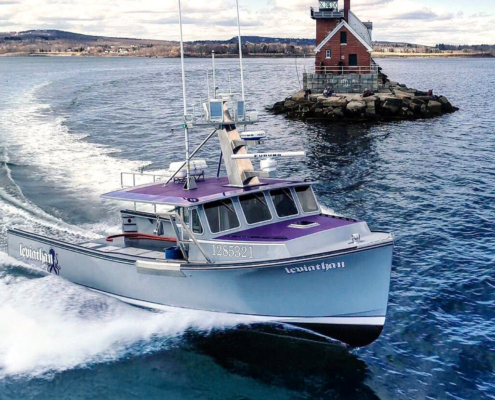 https://blog.durabritelights.com/wp-content/uploads/2025/04/leviathan-boat-on-water.jpg
1250
2000
Abstrakt Marketing
/wp-content/uploads/2024/01/DuraBrite-Logo_6a362a2d-4dff-4723-a7e4-1466056fae1e_220x.png
Abstrakt Marketing2025-04-04 18:45:522025-04-09 17:01:05How to Maximize the Lifespan of Marine LED Lighting
https://blog.durabritelights.com/wp-content/uploads/2025/04/leviathan-boat-on-water.jpg
1250
2000
Abstrakt Marketing
/wp-content/uploads/2024/01/DuraBrite-Logo_6a362a2d-4dff-4723-a7e4-1466056fae1e_220x.png
Abstrakt Marketing2025-04-04 18:45:522025-04-09 17:01:05How to Maximize the Lifespan of Marine LED Lighting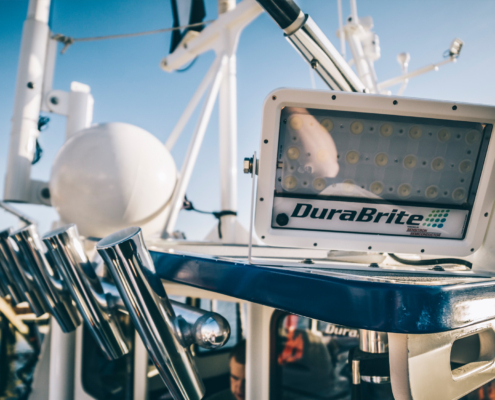 https://blog.durabritelights.com/wp-content/uploads/2025/04/Design-Ideas-for-LED-Deck-Lights-on-Your-Boat.jpg
1250
2000
Abstrakt Marketing
/wp-content/uploads/2024/01/DuraBrite-Logo_6a362a2d-4dff-4723-a7e4-1466056fae1e_220x.png
Abstrakt Marketing2025-04-02 14:09:522025-04-09 16:52:11Design Ideas for LED Deck Lights on Your Boat
https://blog.durabritelights.com/wp-content/uploads/2025/04/Design-Ideas-for-LED-Deck-Lights-on-Your-Boat.jpg
1250
2000
Abstrakt Marketing
/wp-content/uploads/2024/01/DuraBrite-Logo_6a362a2d-4dff-4723-a7e4-1466056fae1e_220x.png
Abstrakt Marketing2025-04-02 14:09:522025-04-09 16:52:11Design Ideas for LED Deck Lights on Your Boat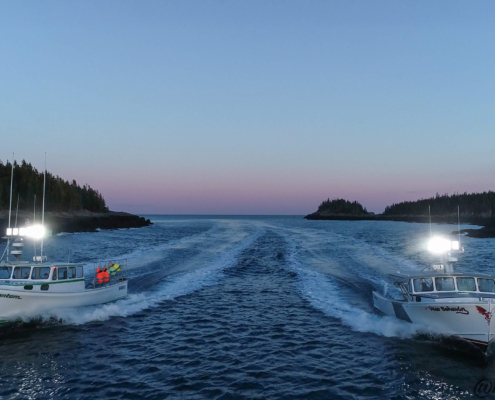 https://blog.durabritelights.com/wp-content/uploads/2025/03/Front-view-of-two-small-boats-on-water-in-the-evening.jpg
1250
2000
Abstrakt Marketing
/wp-content/uploads/2024/01/DuraBrite-Logo_6a362a2d-4dff-4723-a7e4-1466056fae1e_220x.png
Abstrakt Marketing2025-03-31 18:57:432025-04-09 16:50:06The Connection Between Energy Efficiency and LED Lights for Boats
https://blog.durabritelights.com/wp-content/uploads/2025/03/Front-view-of-two-small-boats-on-water-in-the-evening.jpg
1250
2000
Abstrakt Marketing
/wp-content/uploads/2024/01/DuraBrite-Logo_6a362a2d-4dff-4723-a7e4-1466056fae1e_220x.png
Abstrakt Marketing2025-03-31 18:57:432025-04-09 16:50:06The Connection Between Energy Efficiency and LED Lights for Boats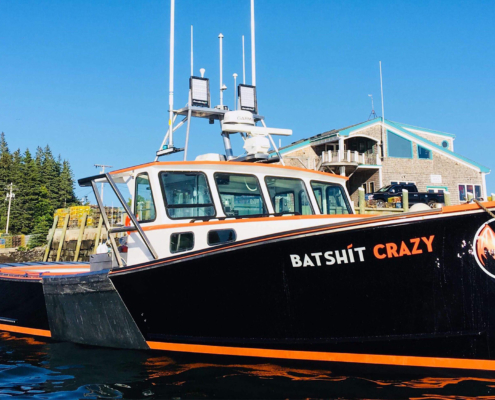 https://blog.durabritelights.com/wp-content/uploads/2025/03/Side-image-of-a-boat-with-lights.jpg
1250
2000
Abstrakt Marketing
/wp-content/uploads/2024/01/DuraBrite-Logo_6a362a2d-4dff-4723-a7e4-1466056fae1e_220x.png
Abstrakt Marketing2025-03-27 18:36:262025-03-31 17:43:25The Hidden Costs of Cheap Marine LED Lights and How to Avoid Them
https://blog.durabritelights.com/wp-content/uploads/2025/03/Side-image-of-a-boat-with-lights.jpg
1250
2000
Abstrakt Marketing
/wp-content/uploads/2024/01/DuraBrite-Logo_6a362a2d-4dff-4723-a7e4-1466056fae1e_220x.png
Abstrakt Marketing2025-03-27 18:36:262025-03-31 17:43:25The Hidden Costs of Cheap Marine LED Lights and How to Avoid Them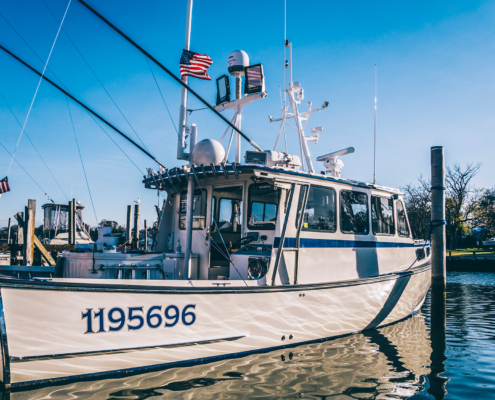 https://blog.durabritelights.com/wp-content/uploads/2025/03/Side-view-of-docked-boat-with-durabrite-lights.jpg
1250
2000
Abstrakt Marketing
/wp-content/uploads/2024/01/DuraBrite-Logo_6a362a2d-4dff-4723-a7e4-1466056fae1e_220x.png
Abstrakt Marketing2025-03-25 18:25:092025-03-31 17:39:29Boating Accident Statistics: How to Minimize Risks and Stay Safe
https://blog.durabritelights.com/wp-content/uploads/2025/03/Side-view-of-docked-boat-with-durabrite-lights.jpg
1250
2000
Abstrakt Marketing
/wp-content/uploads/2024/01/DuraBrite-Logo_6a362a2d-4dff-4723-a7e4-1466056fae1e_220x.png
Abstrakt Marketing2025-03-25 18:25:092025-03-31 17:39:29Boating Accident Statistics: How to Minimize Risks and Stay Safe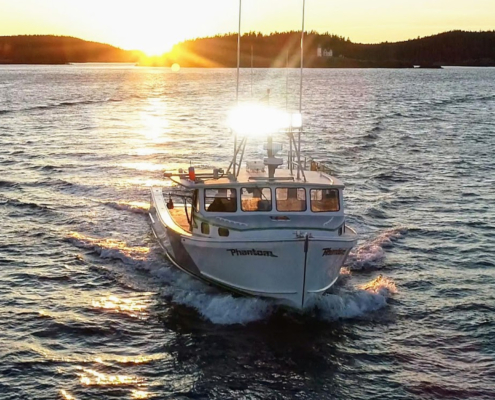 https://blog.durabritelights.com/wp-content/uploads/2025/03/The-5-Must-Have-Features-of-High-Quality-Marine-Lights.jpg
1250
2000
Abstrakt Marketing
/wp-content/uploads/2024/01/DuraBrite-Logo_6a362a2d-4dff-4723-a7e4-1466056fae1e_220x.png
Abstrakt Marketing2025-03-21 12:36:192025-03-31 17:18:16The 5 Must-Have Features of High-Quality Marine Lights
https://blog.durabritelights.com/wp-content/uploads/2025/03/The-5-Must-Have-Features-of-High-Quality-Marine-Lights.jpg
1250
2000
Abstrakt Marketing
/wp-content/uploads/2024/01/DuraBrite-Logo_6a362a2d-4dff-4723-a7e4-1466056fae1e_220x.png
Abstrakt Marketing2025-03-21 12:36:192025-03-31 17:18:16The 5 Must-Have Features of High-Quality Marine Lights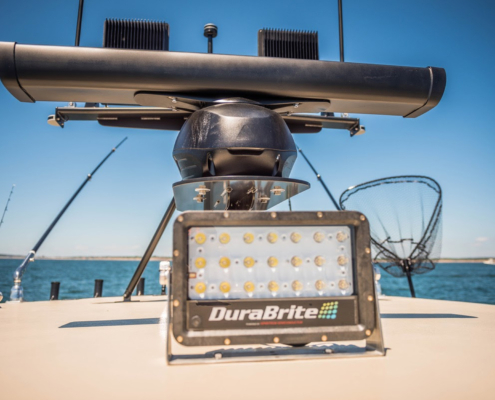 https://blog.durabritelights.com/wp-content/uploads/2025/03/DuraBrite-Lght-on-Boat.jpg
1250
1996
Abstrakt Marketing
/wp-content/uploads/2024/01/DuraBrite-Logo_6a362a2d-4dff-4723-a7e4-1466056fae1e_220x.png
Abstrakt Marketing2025-03-19 12:23:432025-03-31 17:07:19How DuraBrite Built a Better Marine Light
https://blog.durabritelights.com/wp-content/uploads/2025/03/DuraBrite-Lght-on-Boat.jpg
1250
1996
Abstrakt Marketing
/wp-content/uploads/2024/01/DuraBrite-Logo_6a362a2d-4dff-4723-a7e4-1466056fae1e_220x.png
Abstrakt Marketing2025-03-19 12:23:432025-03-31 17:07:19How DuraBrite Built a Better Marine Light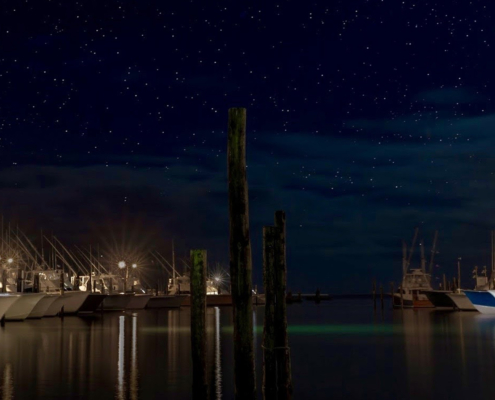 https://blog.durabritelights.com/wp-content/uploads/2025/03/Comparing-Halogen-HID-and-LED-Marine-Lights.jpg
1250
2000
Abstrakt Marketing
/wp-content/uploads/2024/01/DuraBrite-Logo_6a362a2d-4dff-4723-a7e4-1466056fae1e_220x.png
Abstrakt Marketing2025-03-17 14:26:562025-03-31 16:56:54Comparing Halogen, HID, and LED Lights for Boats: Which Is Right for You?
https://blog.durabritelights.com/wp-content/uploads/2025/03/Comparing-Halogen-HID-and-LED-Marine-Lights.jpg
1250
2000
Abstrakt Marketing
/wp-content/uploads/2024/01/DuraBrite-Logo_6a362a2d-4dff-4723-a7e4-1466056fae1e_220x.png
Abstrakt Marketing2025-03-17 14:26:562025-03-31 16:56:54Comparing Halogen, HID, and LED Lights for Boats: Which Is Right for You?Creating advanced lighting solutions that excel across extreme applications, from crab-fishing in Alaska’s Bering Sea, to unforgiving power plants to mission critical law enforcement and military tactical environments, all with uncompromising quality


